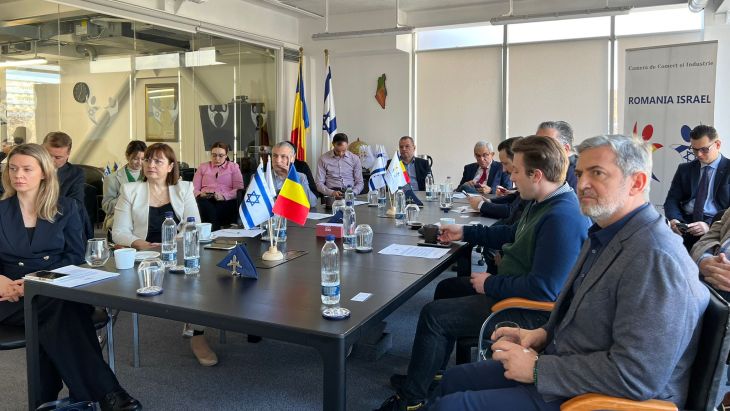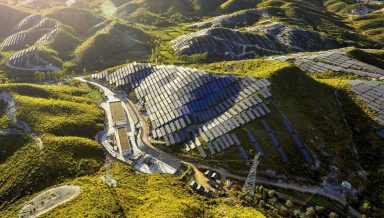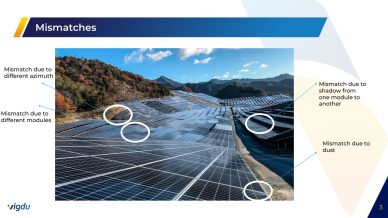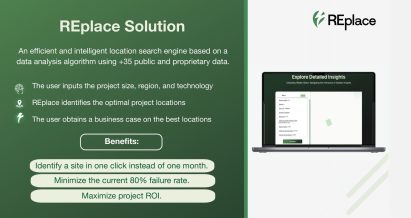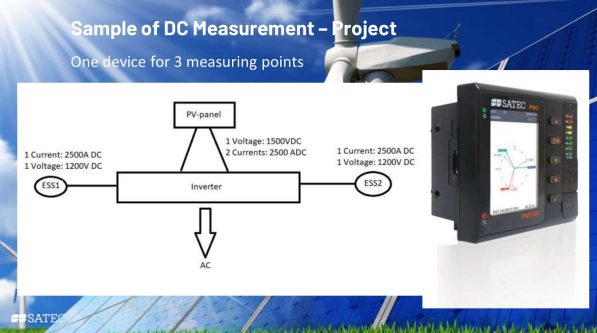Despite the spectacular evolution during the last two years, we are only at the beginning of the energy transformation from centralized polluting power generation to decentralized and green solutions, believes Alon Mashkovich. Co-founder and CEO of enSights, Alon Mashkovich was one of the five business representatives participating at the “Israeli Solar Energy Solutions” event organized by the Economic & Commercial Mission of the Embassy of Israel in Romania.
Speakers from REplace, SolarGik, Vigdu, enSights and SATEC showcased products, services and business models from “five top selected Israeli companies in PV sector” (Avigail Shtamler Paz, Head of Economic & Trade Mission, Embassy of Israel in Romania). The meeting also benefitted the support from the Romania Israel Chamber of Commerce and the Israel Export Institute. The latter is a non for profit organization, established in 1958 as a joint venture between the government of the State of Israel and the private sector. “It represents more than 230 companies, out of which 10% operate in the photovoltaic industry” (Hila Lipman, Head of Energy & Smart Infrastructure Technologies, Israel Export Institute).
According to Andrei Manea, the Executive Director of the Romanian Photovoltaic Industry Association – RPIA, we are now experiencing “one of the best periods for developing renewables in Romania.” He went on to say that Israeli businesses are among the biggest investors when it comes to both ownership and building projects.
REplace – identify the best location
REplace is basically a software company designed to help energy developers find a suitable location for their project. The company provides information about various energy project sites where the return on investment of the project will be higher, enabling businesses to find cost-efficient energy sites for generating renewable energy.
CEO Matias Sigal highlighted that 80% of the PV projects fail in development phase due to obstacles related to landscape, the inability to secure land, complying with regulations, and granting grid connections. “Our data analysis technology empowers developers to pinpoint promising locations with a single click”, promises REplace. “Our proprietary algorithm selects sites with maximum revenue potential while reducing costs,” explained Matias Sigal.
Potential developers of a RES project are asked to insert their desired project type (solar, wind, storage, or more), and to specify the size or capacity of the project. First, irrelevant plots of land are excluded from the results. Then, the 40-parameters-based algorithm fed with public and proprietary information, provides suggestions on the most suitable location.
Is such a solution applicable in Romania, given the lack of public information, the extreme fragmentation of the land plots, and difficulties in accessing the grid? Matias Sigal answered, mentioning the Canadian example, where the team of REplace “built the data on land.”
SolarGik – Tracking technology for difficult areas
SolarGik undertook the mission “to unlock the potential of solar energy by solving the industry’s biggest challenges – intermittency, reliability, predictability, and flexible production and distribution”. Their approach involves both hardware (“unique design trackers”) and software (the “in-house SCADA system, ‘SOMA’”), summarized Odeya Goddard, Business Development Manager with SolarGik.
SolarGik proprietary trackers promise to enable “installation on slopes up to 30% and in oddly shaped sites, eliminating the need for costly grading and civil work”. “Our solutions weigh 20-30% less than standard trackers, which allows them to be installed not only in regular ground mount projects but even on rooftops, greenhouses, carports, and agricultural fields”, explained Odeya Goddard. These trackers provide 15-25% more energy production than fixed-tilt systems while costing 20-30% less than other trackers. “In addition, we have a Tracker Control System that aggregates wind data, camera feeds, radiation, cloud coverage, etc., and uses AI and proprietary tracking algorithms to increase energy generation and reduce O&M costs.”
Together with the trackers, SolarGik’s Orchestration Master Application (SOMA), is an all-in-one site management software for optimizing solar plant performance by linking the various field-level components thus allowing for predictable energy generation. Here are some examples:
- Dirt reduction and cleaning optimization
- Intermittency mitigation based on weather forecasting
- Mechanical clipping to reduce overheating and hardware degradation
- Smart energy shifting based on time-of-day pricing
- Balancing sunlight utilization between crops and energy generation
Vigdu Technologies LTD – multi-string optimizer SolarJet
Alex Rudnicki, Sales and Business Development Executive, at Vigdu Technologies LTD, presented their inverter-agnostic multi-string optimizer SolarJet. He started from the fact that among PV strings in a park, there are inevitable variations in performance due to manufacturing differences, non-uniform string lengths, differences in shading, soiling, misalignment, tracking system (when exists), and many other. “Even the smallest string mismatch impacts total efficiency, reducing the overall energy yield by 2-10%, sometimes even more”, he stressed. “SolarJet is a multi-string DC/DC converter. It isolates each string to create the optimal working point for bad/weak strings and good/strong strings. It increases the energy harvested from both weak and strong strings by constantly tracking each string’s Maximum Power Point Tracking (MPPT) in real-time, independently of the inverter MPPT, while keeping its output voltage at the inverter’s optimized MPPT”, came the explanation.
Alon Mashkovich, CEO of enSights, talked about a centralized monitoring and asset management platform for PV installations which includes artificial intelligence (AI) and machine-learning (ML) algorithms to optimize renewable energy assets’ efficiency and productivity. At turn, Alexandra Kichoutkin, EMEA Sales Manager at SATEC, discussed some approaches for metering and power quality certified products, including some solutions for automated billing, also in the case of systems bundling e-mobility charging and PV power generation.
